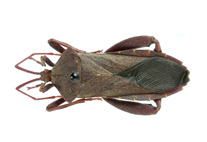Abstract
A survey was performed to detect the presence of cyst nematodes in the Cape Floristic Region of South Africa. Soil was collected in the rhizosphere of the dominant plant species within blocks of indigenous vegetation and cysts were extracted from them. A total of 81 blocks of indigenous vegetation were sampled as described. Cysts were detected in 7 of these samples, representing 6 different vegetation types. One set of primers was used to amplify the ITS regions from these cysts, including the 5.8S ribosomal gene, as well as short parts of the 18S and 28S ribosomal genes. ITS-rDNA sequences from the indigenous isolates were aligned with selected sequences of other species from the Heteroderidae. Phylogenetic analyses to resolve the relationships between indigenous isolates and selected representatives of the Heteroderidae were conducted using the Maximum Parsimony method. The consensus tree resulting from alignment of the circumfenestrate cysts revealed that isolates SK18, WK1 and WK26 are included in a clade of Globodera species that parasitise non-solanaceous plants, forming a monophyletic group with G. millefolii, G. artemisiae, and an unidentified Globodera sp. from Portugal. In a tree resulting from the alignment of the Heterodera spp., isolates OK14 and WK2 are included in the Afenestrata group, forming a monophyletic group with H. orientalis.This survey unearthed at least four potentially new species of cyst nematodes, which may prove invaluable for the study of the evolution and biogeography of the group.

